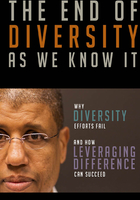
Hiring for Diversity Is Tough
Despite the evidence to the contrary, many leaders remain committed to the vision that diversity matters, and they feel accountable for getting people of diverse backgrounds into their organizations. But after two decades of learning about best practices in recruiting and hiring of people who are different, it remains extremely difficult to apply those lessons. According to one survey of more than 2,500 senior HR executives in North America, 29 percent reported that although their managers valued diversity, they didn’t know how to recruit people who were different.
Hiring to enhance diversity is difficult because often organizations haven’t discovered where to find the talented people they want. Recruiting systems frequently fail to connect hiring managers with the right people. The problem may stem from inadequate access to talent pools of the people who have the desired difference. It’s standard practice to seek out these candidates at job fairs or to access culturally specific organizations—the Hispanic Association of Colleges and Universities, for instance, or historically black colleges and universities (HBCUs). But even these sources become overused, and companies may struggle to find candidates to fill their positions.
An additional flaw in many recruiting systems is the fact that job descriptions may not adequately capture real job requirements. Therefore, people who could perform quite well in a job are overlooked because they appear to be unqualified, based on the description. At PWM Group,* a mid-sized private wealth management firm, one managing director reported that he wasn’t sure what attributes would lead to high performance in his financial advisor positions, so he had come to rely more heavily on his general sense about who could succeed in the job. He and his firm hadn’t done a good job of collecting reliable data on what qualifications correlated with performance.
one managing director reported that he wasn’t sure what attributes would lead to high performance in his financial advisor positions, so he had come to rely more heavily on his general sense about who could succeed in the job. He and his firm hadn’t done a good job of collecting reliable data on what qualifications correlated with performance.
These recruiting system flaws are exacerbated by the biases that hiring managers invariably hold. A great deal of research outlines the deficiencies of managers in recruiting and hiring people who are different. For example, managers may have stereotyped perceptions about race, age, disabilities, and other differences. Sometimes these biases are conscious and explicit, but perhaps even more damaging are the unconscious and implicit psychological biases that influence decisions about whether to hire an applicant for a position. An especially dramatic example of this phenomenon garnered widespread attention in 2005 when Marianne Bertrand and Sendhil Mullainathan published a study on hiring bias. They had sent fictitious resumes in response to help-wanted ads in Boston and Chicago newspapers, randomly assigning them names that “sounded” African American or white. Resumes with white names received 50 percent more calls for interviews than those with the African American names. This gap was uniform across occupation, industry, and company size.
An especially dramatic example of this phenomenon garnered widespread attention in 2005 when Marianne Bertrand and Sendhil Mullainathan published a study on hiring bias. They had sent fictitious resumes in response to help-wanted ads in Boston and Chicago newspapers, randomly assigning them names that “sounded” African American or white. Resumes with white names received 50 percent more calls for interviews than those with the African American names. This gap was uniform across occupation, industry, and company size.
These dynamics can make it difficult for managers and leaders to hire enough diverse people. Managers I speak with frequently lament that there simply are not enough women or people of color available. And at times this may be true; there may not be a large enough pool of diverse talent for a given position. But more often than not, this perception is fueled more by poor recruiting systems and biases than by reality. The challenge is to establish the conditions for transforming that perception into energetic and innovative thinking about how to find the people you need, no matter what.